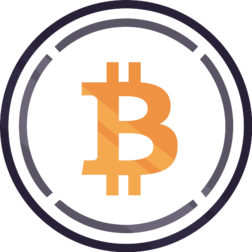Binance Coin (BNB) is the native cryptocurrency of Binance, one of the largest and most influential cryptocurrency exchanges globally. It plays a vital role within the Binance ecosystem and beyond. Here’s everything you need to know about BNB:
Origins and History
- Launch Year: 2017
- Initial Distribution: BNB was introduced through an Initial Coin Offering (ICO) in July 2017. It initially ran on the Ethereum blockchain (ERC-20 standard) but later migrated to Binance Chain.
- Creator: Binance, founded by Changpeng Zhao (CZ).
Key Features
- Utility Token:
- BNB is primarily used to pay transaction fees on Binance Exchange, offering discounted rates for users.
- It is also used across various Binance platforms, such as Binance Smart Chain (BSC), Binance Launchpad, and Binance Earn.
- Deflationary Model:
- Binance conducts regular BNB burns to reduce its total supply. These burns are based on trading volumes and aim to enhance the token’s value by increasing scarcity.
- The initial supply was 200 million BNB. Over time, this has decreased due to the burning mechanism.
- Ecosystem Integration:
- BNB is a core asset in the Binance Chain and Binance Smart Chain ecosystems, used for transaction fees, staking, and decentralized applications (DApps).
Use Cases
- Transaction Fees:
- Users can pay trading, withdrawal, and listing fees on Binance Exchange using BNB, enjoying significant discounts.
- Staking and DeFi:
- BNB is used in staking to secure the Binance Smart Chain and participate in various decentralized finance (DeFi) activities such as liquidity pools, yield farming, and lending.
- Payment Method:
- Many merchants and platforms accept BNB as a payment option, making it a practical utility token.
- Token Sales and Launchpad:
- BNB is used to participate in token sales hosted on Binance Launchpad.
- Gaming and NFTs:
- BNB powers transactions in blockchain-based games and non-fungible token (NFT) marketplaces on Binance Smart Chain.
Advantages
- Wide Adoption: BNB has a strong user base and utility across multiple platforms.
- Discounts: Provides discounts for frequent traders on Binance.
- Versatility: Functions as a payment method, investment tool, and DeFi asset.
- Ecosystem Growth: The growth of Binance Smart Chain and related projects increases demand for BNB.
Supply Details
- Initial Supply: 200 million BNB
- Current Circulating Supply: Subject to periodic token burns. Check Binance’s official website for the latest supply updates.
- Burning Mechanism: Binance aims to reduce the total supply to 100 million BNB through quarterly burns.
Risks and Considerations
- Regulatory Scrutiny:
- As Binance operates globally, it faces regulatory challenges in several countries, which could affect BNB.
- Dependence on Binance:
- The value and adoption of BNB are heavily tied to Binance’s performance and reputation.
- Market Volatility:
- Like other cryptocurrencies, BNB’s price is subject to significant fluctuations.
Recent Developments
- Binance Smart Chain (BSC):
- Launched to support smart contracts and DeFi applications, making BNB integral to its ecosystem.
- BNB Chain:
- In 2022, Binance Chain and Binance Smart Chain were unified under the BNB Chain brand to expand the token’s utility further.
How to Buy and Store BNB
- Where to Buy:
- BNB is available on Binance Exchange and other major cryptocurrency platforms.
- Storage Options:
- Hot Wallets: Binance Wallet, Trust Wallet, or MetaMask for quick access.
- Cold Wallets: Hardware wallets like Ledger or Trezor for maximum security.
Conclusion
Binance Coin (BNB) has evolved from a simple utility token to a key component of the Binance ecosystem and a versatile cryptocurrency with a broad range of use cases. Its deflationary nature, coupled with the growth of Binance Smart Chain and the broader adoption of cryptocurrencies, positions BNB as a significant player in the crypto world.
Always do thorough research and consider the risks before investing in or using BNB.





